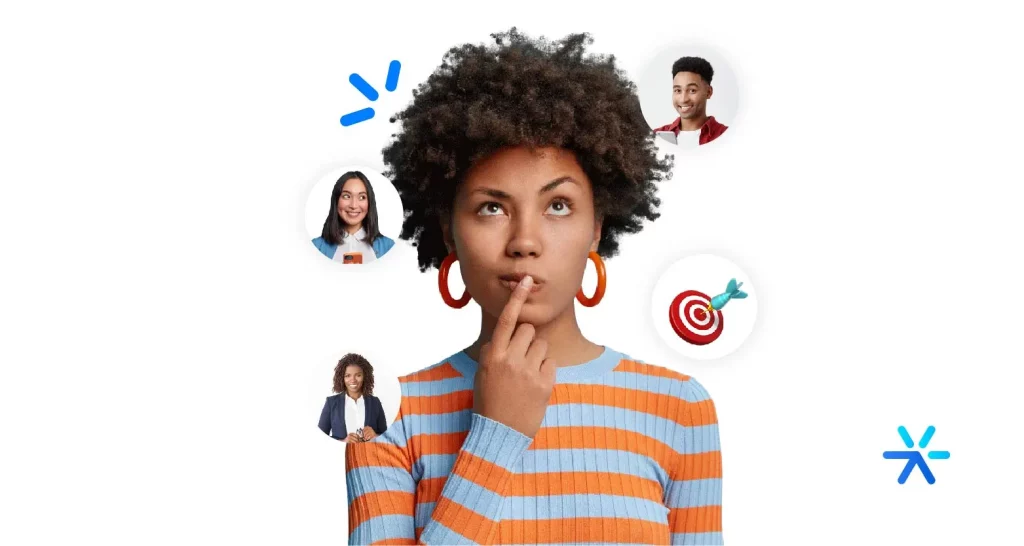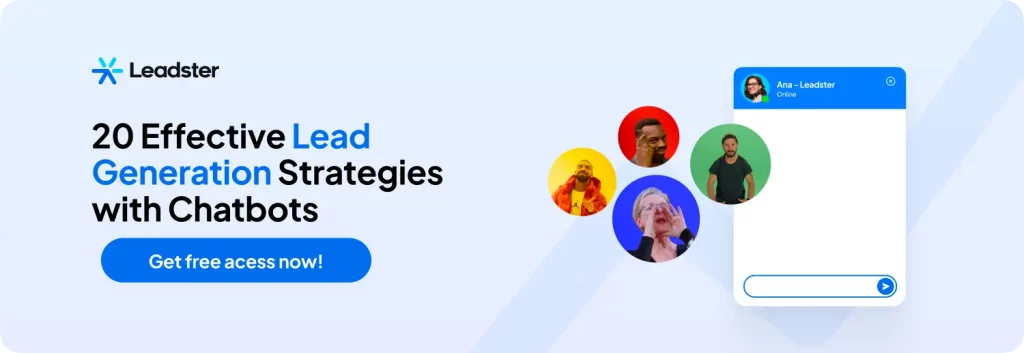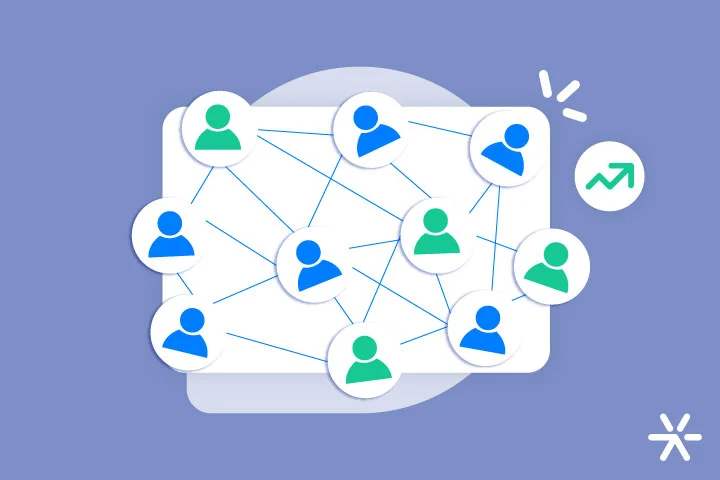Community Marketing: Why You Should be Doing It
Yes, you can believe it: it’s quite possible that you should already be doing community marketing and you’re missing out on this opportunity.
Moreover, in some cases and depending on the product, it’s not even a matter of opportunity — but rather a necessity.
Community Marketing is a bit like that: when you least realize it, and sometimes even without trying, a community is already forming around your product naturally.
Two things are important then: fostering the creation of communities and recognizing when they arise naturally. But how exactly do you do that?
That’s the subject of today’s article. In the first part, we’ll discuss what Community Marketing is and what its main principles are.
Then, we’ll talk about how to analyze if your brand needs to put the concept into practice. And how to do it.
All set to begin? Then let’s go:
What is Community Marketing?

This is a question with several answers. But basically, we can reduce Community Marketing to a very basic concept: bringing people closer to your brand by forming groups of individuals interested in specific topics.
To understand Community Marketing well, we need to have a good understanding of what a community actually is.
A community is a group of people who share something in common. Typically, individuals in this group like to talk about the topic and share experiences through three main mechanisms:
- Group Awareness: The community recognizes itself as such through its shared tastes (or needs).
- Traditions and Rituals: The community has its own way of communicating and performs specific acts that make sense to it.
- Sense of Obligation: The community feels it has a duty to take care of itself, helping its members to develop.
The main function of Community Marketing is precisely this: working on these three aspects by offering something of value to the community that forms around your product, service, or area of activity.
But it’s important to note a point before we delve deeper into the text, and this point directly addresses the formation of this community. Follow along with me:
Why You Should Be Doing Community Marketing

First, we need to discuss the formation of communities in more detail. In some cases, they will form spontaneously around your product or service.
This is quite common in products in the SaaS (Software as a Service) business model.
The product and the need it solves are inseparable in these cases, and naturally, small communities of people will form around the best practices for using them.
This is very much the case with Salesforce, for example. There is an unofficial community on Reddit, r/Salesforce, which brings together more than 60,000 people discussing the product and its uses.
In this case, Salesforce made no effort to create and maintain the community. It emerged spontaneously and is maintained by the users themselves.
In other cases — and these are much more common — the brand works to bring the community together in a controlled space, such as a WhatsApp group, for example, or a dedicated forum, or even a news portal, a YouTube channel, etc.
Still in the example of Salesforce, the CRM giant also has an official forum and encourages experienced users to answer questions and doubts from those who are just starting out.
The same goes for Microsoft, the same for HubSpot, and even for Lenovo.
That’s why you should be doing Community Marketing: unofficial communities may already be forming around your product, especially if it’s SaaS.
Because of this, you need to take advantage of this organization to bring more brand recognition and organize interactions regarding your product, having greater control over the message and what is said about it on the internet.
What are the stages of Community Marketing?

In practice, establishing a community around your product or service goes through some well-defined stages.
The first of these is what we have been discussing so far: the analysis and diagnosis of the communities that are forming around your product, and those that can still form with your support.
This planning comes naturally when you begin to discuss the feasibility of Community Marketing for your brand, product, or service. Consider questions like:
- Where are communities forming spontaneously?
- In which channels to create your own communities?
- What type of community will it be (Support? Focus on Lead Generation?)
- Who takes care of the community (Staff or the users themselves?)
- What type of materials will you provide?
- What are the conversion strategies?
Oops, these last two points are spoilers 😬 Let’s do a more in-depth analysis now, come with me:
Capturing
After understanding where your community will be created and what its dynamics will be, it’s time to capture people to be part of it.
This can happen in various ways, depending on the type and purpose of your Community Marketing.
If your focus is on creating Telegram and WhatsApp groups, for example, capturing needs to be more active, working on Inbound Marketing and Paid Media to bring more people to the group.
🤿 Dive Deeper: How to Create a Telegram Chatbot – the Easy and the Hard Way
🤿Deeper still: How to Create a WhatsApp Chatbot: 3 Ways + Examples
Here we are talking about a marketing strategy involving CTAs in all your content, email campaigns, Google Ads, and Social Ads, etc.
Capturing a support community is different. Here, your goal is to help your users use your product, something very important in any SaaS strategy.
You need to advertise this support on your official channels, but there’s no need to run extensive capture campaigns: just offering a good user experience is enough.
Empowering
The second step is delivering what your community has committed to doing. This will also vary according to the nature of your community.
For example: there are several brand communities on WhatsApp that essentially serve to foster discussions about marketing among their members and deliver e-books, infographics, reports, and whitepapers.
These communities need editorial planning, seeking to understand, according to the users’ profile, what is the best material for each moment.
Support communities or other types also need to have this concern. But of course: all in accordance with what the community aims to deliver.
Converting
The word “conversion” here is already related not to something specific but to the general objective of the community.
So we are not just talking about lead conversion or sales conversion. You need to understand what you want to “gain” from your community, and from there, determine conversion goals.
For example: do you want people inviting others to your WhatsApp or Telegram group? Then your conversion goal will be the number of new invited users.
Another example: do you want people naturally interacting in the group, creating discussions and helping each other? Great: your conversion goal is interaction.
Each goal will have specific actions that only you, as the creator of the community, will be able to determine. Once you know what to do, you also need to create an action plan to achieve these objectives.
Monitoring
The last step is the constant monitoring of the development of your community.
This is quite important because communities provide you with a wealth of data about your customers.
The conversations happening there speak directly about your segment and your product or service. It’s a real goldmine!
In fact, one of the main motivations for creating and maintaining communities is precisely this wealth of insights they offer.
People need to work constantly on their communities. In moderation, in preparing materials, and in interacting with your audience as well.

How to Analyze If Your Brand Needs Community Marketing?

Well, so far, we’ve talked quite a bit about the main characteristics of Community Marketing, and we’ve also understood when it’s an opportunity and when it’s a necessity.
But this doesn’t make it clear how to make a more comprehensive diagnosis if your brand needs or benefits from Community Marketing.
We need to discuss that now. In some situations, Community Marketing may even be quite dispensable — but in others, it seems unnecessary until you start doing it.
That’s because the results of Community Marketing are quite unpredictable and depend a lot on your level of interaction with people and their interaction with each other.
The results that can arise from this, although unpredictable in many cases, are always great.
So let’s get to it: how do you know if you need to create communities? And how do you know if, even without needing to, you have a great opportunity at hand?
Let’s find out now:
High Content Production
Brands that work hard on Content Marketing are in a prime position to work on Community Marketing.
This is because intensive content production naturally demands intensive distribution as well. And the sheer amount of content already opens up an opportunity for creating communities.
The reasoning goes like this: the creation of a community goes through the 4 stages we saw in the last topic, right? But for them to work, your community needs to be attractive.
It’s impossible to capture people without offering anything. It’s impossible to maintain engagement without guiding the conversation.
If you produce a lot of content, you already have these two ingredients. The next step is simple: create a WhatsApp group and start gathering participants for your community, making the content available there.
But of course, this is just one example of a community you can create, and also the most common. The sky is the limit for your creativity!
High Engagement with the Tool
It’s what we were talking about at the beginning of the article: there are tools that are so useful to your users that they become not only part of their work routine but also how they think about work.
Take the case of RD Station, for example. For many marketing professionals, lead capturing work is intrinsically linked with RD Station. The two are inseparable.
The brand, recognizing this level of engagement, created various types of different communities. There’s RD Summit, RD Academy, Newsletters, a Telegram group, a YouTube channel, etc.
With this, RD Station achieved the great pot of gold at the end of the Community Marketing rainbow — being the ultimate reference in the segment.
Need for Training
Salesforce Trailblazer is a great example of a community that has been inspiring other brands for years.
If you’ve never used Salesforce, let me explain how it works: it creates small applications for simple task automation at work.
For example: you can create an entire CMS from scratch if you want. You can create a customer service application. But this requires a lot of training — in some cases, even hundreds of hours.
Trailblazer is the platform Salesforce uses to provide this training. They distribute badges, provide forums, offer certifications, and much more.
So, something that would be a necessity anyway in the product becomes a Community Marketing action.
If your product is like this, make lemonade out of lemons. Instead of presenting documentation on a basic help page on your website, offer a whole learning structure and start building your community.
Support in Beta Versions
Many SaaS products start with Beta versions that are quite different from the final result. Very different indeed.
In this case, a community is highly necessary to help you fix bugs, implement new features, and measure the audience’s acceptance of your tool.
You can also create a simple community on Reddit and use it as an initial discussion forum, bringing patch notes, roadmaps, and gathering feedback from your users.
Formation of Communities Naturally Around Your Product
The last point is what we’ve been discussing throughout the text. There will come a time when people will naturally create communities around your product.
I mentioned the r/Salesforce subreddit at the beginning of the text, but you can find communities there for various other SaaS products, such as r/HubSpot, r/Marketo, etc.
These communities were not created by the brands. But a Community Manager is in all of them, often interacting, answering questions, and offering support.
That’s exactly what you need to do in this case. Be present, be there when they need you.
How to Create a Community Today?

As you may have noticed so far, Community Marketing often revolves around intuition.
You receive some tips from your customers and users of your product and go along with them. Or you have a lot of material to share. Or communities are already forming, and you just want to offer a more formalized space.
Whatever the situation and what the current moment is demanding from you, there are some basic steps that will greatly help you in creating your communities.
These steps, although basic to describe, require qualified professionals and a lot of commitment to your product and your audience.
Also, any information you transmit through these community channels is subject to fierce scrutiny: the larger your community, the more people can notice small mistakes here and there.
Because of this, you need to follow a very well-structured plan to launch and maintain your communities, no matter what type they are. I’ve compiled some general best practices to help you:
Determining the Channels
Where will you be? This is the first step, your basic diagnosis, usually resolved by the type of community you are looking to create.
For example: a community focused on generating leads and distributing materials works best on WhatsApp and Telegram. A support community on forums that you create on your website.
There are numerous types of communities you can create, and some of them you don’t even create. Therefore, make this main analysis to understand what your main goals are and choose the channel accordingly.
Another important point: channels often choose themselves. Where is your audience? You also need to be there.
Throughout the text, I brought some examples with Reddit, but notice how they only work because the audience came first.
Studying the channels that your users and people interested in your segment and brand are using is important because of this. Being where your audience is is an urgent need for Community Marketing.
Creating the Moderation Team
An indispensable figure in Community Marketing is the Community Manager.
This professional is responsible for moderating and sending materials to all groups that the brand creates or participates in.
For example: in a WhatsApp group, it is the Community Manager who is responsible for responding to participants, sending more materials, and encouraging interaction among participants.
In forums, the Community Manager is also responsible for maintaining the civility of discussions, answering questions, correcting users where necessary, etc.
The larger your presence, the more CMs you will need to have. This is a very important job, and it is essential to have the team prepared before creating your first community.
Giving Users the Spotlight
But it is important to emphasize that, in Community Marketing, the protagonist always has to be the community member.
It is quite common to find closed WhatsApp and Telegram groups where only the brand communicates. These types of groups are doomed to fail.
The reason is simple: it is much more challenging to be interested only in material being delivered frequently in a group. We already have too many groups to take care of in our daily lives.
For a community to be interesting and indispensable for users, it must put them at the center of their interactions. They need to speak more, not you.
Always remember this. All materials delivered must be thought of as a way to stimulate interactions in your community.
Even in the case of discussion and support forums, it is better to let users answer each other’s questions. Monitor, but only interfere if it takes too long, or the answers have not been very satisfactory.
Doing the Follow-up Work
More about follow-up: it needs to be constant and daily.
Always remember that you are dealing with people in a community. People make mistakes, talk nonsense, and even fight occasionally.
All of this has direct repercussions on your brand. Be careful because a simple situation can become a big snowball and harm strategies that go beyond Community Marketing.
Delivering Exclusive Offers and Building Hype
To finish the topic, we need to talk about the type of material and offers that you will make available through Community Marketing.
Any material in your community needs to be exclusive, or it loses its meaning. Consider some suggestions:
- E-books made available before everyone else has access;
- Specific and exclusive reports — only the group has access;
- Offers only for group members;
- Promotions on products that are being discontinued;
- Premium access to behind-the-scenes content (great for YouTube).
You need to build hype in your community. Hype is what makes something desirable, like the trailer for a movie that everyone has been waiting for for over a year.
Your community needs to offer value and go even further: effectively communicate the value it offers.
4 Examples of Community Marketing in Action
Now that we’ve understood everything in theory about Community Marketing, it’s time to do what everyone likes the most: present some interesting examples of the strategy being applied in practice.
Here you will see how communities can be diverse, and there is no “right way” to do Community Marketing. You can start small with a WhatsApp group or go much further, creating communities with people from all over the world collaborating.
The important thing is to always keep your target audience in mind. And that’s what these brands below did.
Let’s learn a little more?
Steam Workshop
Today, one of the leading brands working on Community Marketing is Steam, the largest global distributor of digital PC games for decades.
Steam offers a discussion forum for each game in its catalog. Even if this forum has only 10 people participating, it remains open as long as the game is being sold.
But that’s just the beginning. Steam’s major Community Marketing initiative is in the Steam Workshop.
Computer games allow extensive modifications by others. But often, game distributors do not encourage the practice and may even try to suppress it, citing copyright infringement of intellectual property.
Steam left all that behind when it opened its Workshop. Basically, it gathers all modifications from thousands of games that can be installed with just one click.
In the gaming world, this was an unprecedented revolution. Before the Workshop, the only way to install a modification was through downloading files and manual installation.
This is dangerous and quite laborious. The Workshop, in addition to offering modifications, also gathers game screenshots, original artwork, fan fiction, etc.
LEGO Ideas
We talked earlier about a data-driven approach using Community Marketing, remember?
LEGO does exactly that with its LEGO Ideas community. In it, LEGO enthusiasts are encouraged to post their creations using the bricks and even entirely new set designs.
Everyone wins in this situation: creatives feel valued with feedback from other creatives and the company itself. And LEGO gains in sales and even in good ideas for future collections.
Adidas Creators Club
But you can also be more direct in Community Marketing. The Adidas Creator Club is a great example of this.
Through it, people who complete some activities — post a photo with the products, exercise, etc. — earn points that can be exchanged for discounts on Adidas’ e-commerce.
This is a great example of the exclusivity of offers and gamification in marketing.
Since it is very difficult to give discounts that only a portion of the population can obtain, Adidas offers points. Community participants create their personalized discounts through them.
Hey, what did you think of Community Marketing? I hope it was easy to grasp the strategy.
In reality, there’s no magic formula for creating communities and applying the concept. Actually, it all depends on you, your industry, your clients, and the target audience you’re addressing.
Knowing the steps to set up your community is important, of course, but it’s your own steps that will tread this path.
And to close off the article, a little more about us.
Leadster is a chatbot platform that lets you create your own lead generation chatbots, helping you to convert visitors to leads.
We have a free trial available on our website. It’s 14 days and no credit card is required, ok?
Check it out and start transforming your marketing today!
Thanks for the read and we’ll see each other again in the next article.








